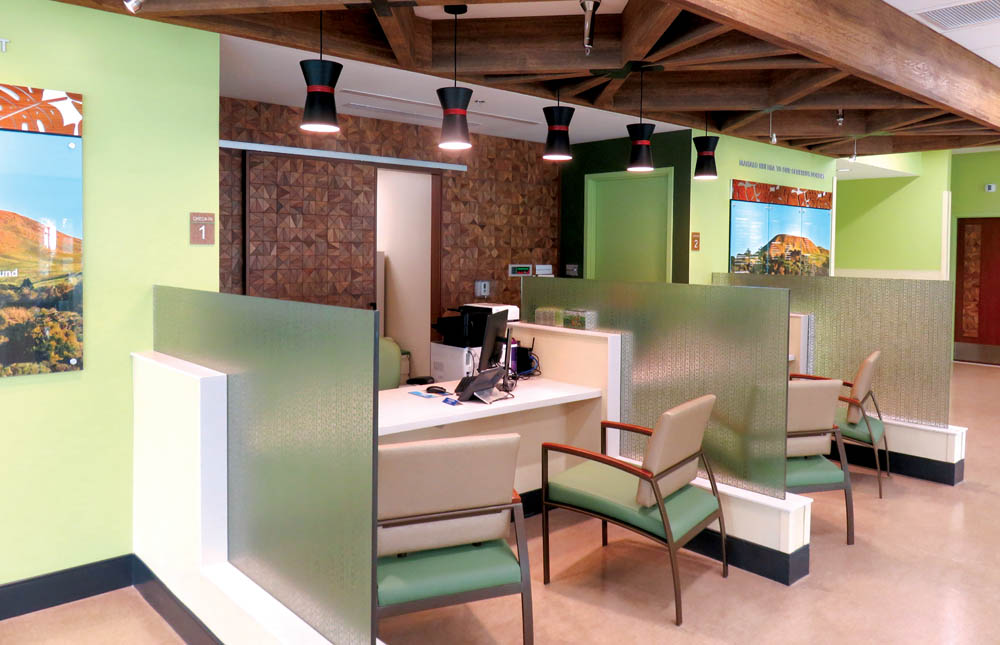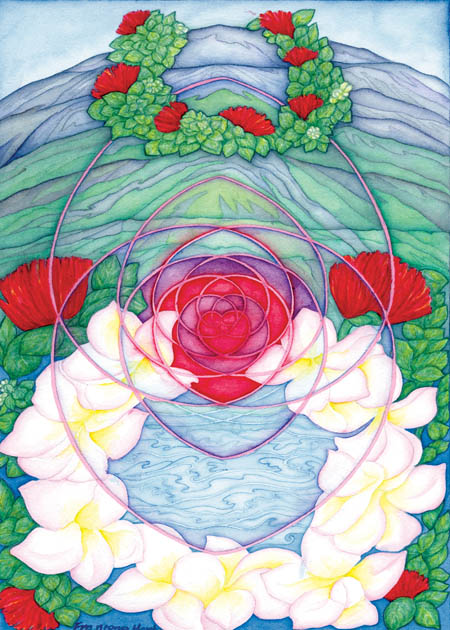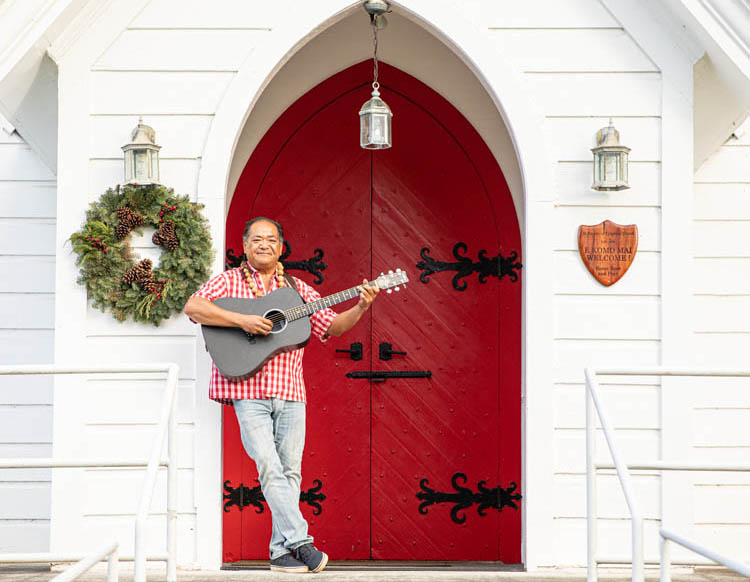
Mila Polevia: Music is Home
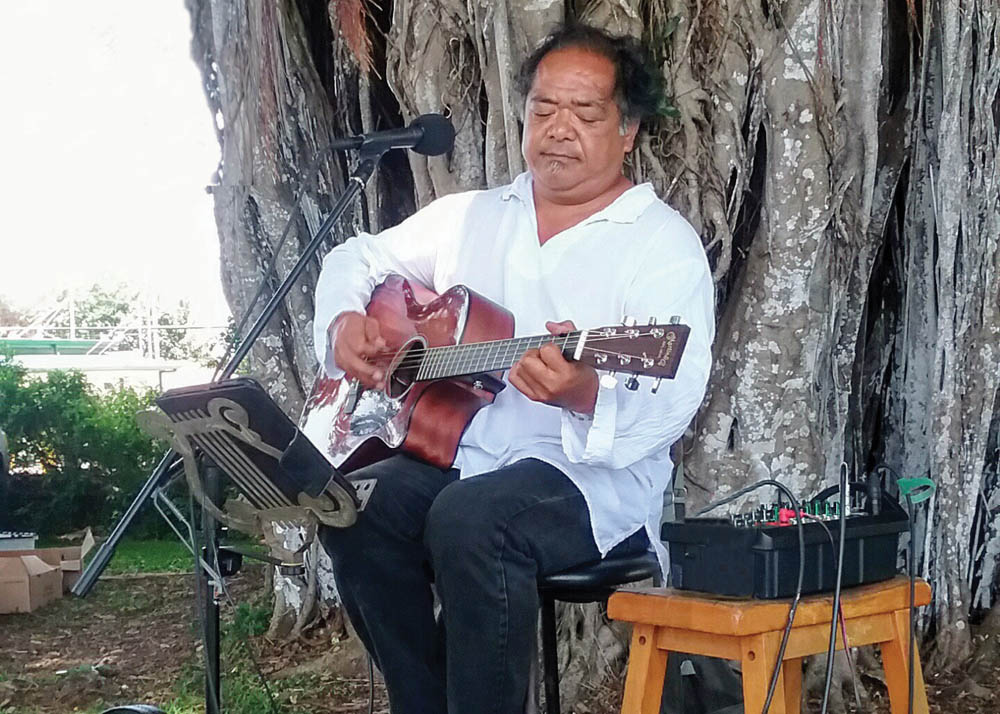
By Catherine Tarleton
Kohala is almost a mystical place,” says musician Mila Polevia, music director for St. Augustine’s Episcopal Church in Kapa‘au. “Not only is it King Kamehameha’s birthplace, it’s just kind of magical. And there’s lots of famous musicians, Kindy Sproat, the Lims, John Keawe…so much of what Hawai‘i is and was and comes from is here, from Kohala.”
Born in American Samoa, he came to Hawai‘i before he was one year old. “I was raised on the windward side of O‘ahu,” Mila says. “It was a lot like Kohala is now. My father went to work on the plantations at Pāpa‘aloa and I came to see him on the Big Island in the summers.”

He first learned to play music while attending a private school on O‘ahu. “We had ‘ukulele class in school. It was a full period, and I learned basic chords there, all those real goofy, easy songs,” says Mila. “My best friend Russell, who’s still my friend, had a guitar and showed me some things at recess. We shared that guitar back and forth for a long time. One would take it home and learn something, then bring it back and teach the other the next day. In high school we played music together. He is a dentist now.”
That shared guitar inspired Mila’s musical journey. In high school, he would skip class and go to the music room, where he’d borrow a piano student’s books so he could teach himself to play piano. Laughing, Milo says, “When parents ask me how I learned about music, I tell them, ‘You don’t want me to tell your kids how I learned.’”
Mila studied music at the University of Nebraska at Lincoln. “Go Big Red,” he says with a smile. “I was a brass major, so I played all the instruments. At the time, they had three different bands.”
About the same period, still in Nebraska, he also made a little money playing music for various Rotary Club or Lions Club lū‘au in the area. Of course, it was the iconic, fairly cliché Hawaiian sound expected. He distinctly remembers one of his teachers telling him, “I’m afraid that this music will change who you are,” says Mila. “As far as how I play music, I play with the aloha spirit. And she said, ‘The music you play has a je ne c’est quoi. In Western style music you should really be conscious of that.’ It was amazing. I’ve never forgotten that.”
“I ended up dropping out of school, dropping out of the music program, and playing for a living,” says Mila. He went to Tokyo Disney to play music with a group, and eventually became music director there. His travels then took him to the Pacific Northwest, where he played with various bands and did some gigging on his own.
He married and started a family while working as a full-time musician in Oregon and Washington. “I was playing music, being music director at different churches—choirs, praise bands, all different types that needed music,” says Mila. “That was my career for 25 years.”
They moved back to Honolulu in 2013, but Mila had trouble finding work, a situation that proved devastating for him. “I ended up being a janitor, NO music at all,” Mila says. “I slowly died inside. It affected my marriage.” What happened two years later may have been the result of at least some divine intervention.
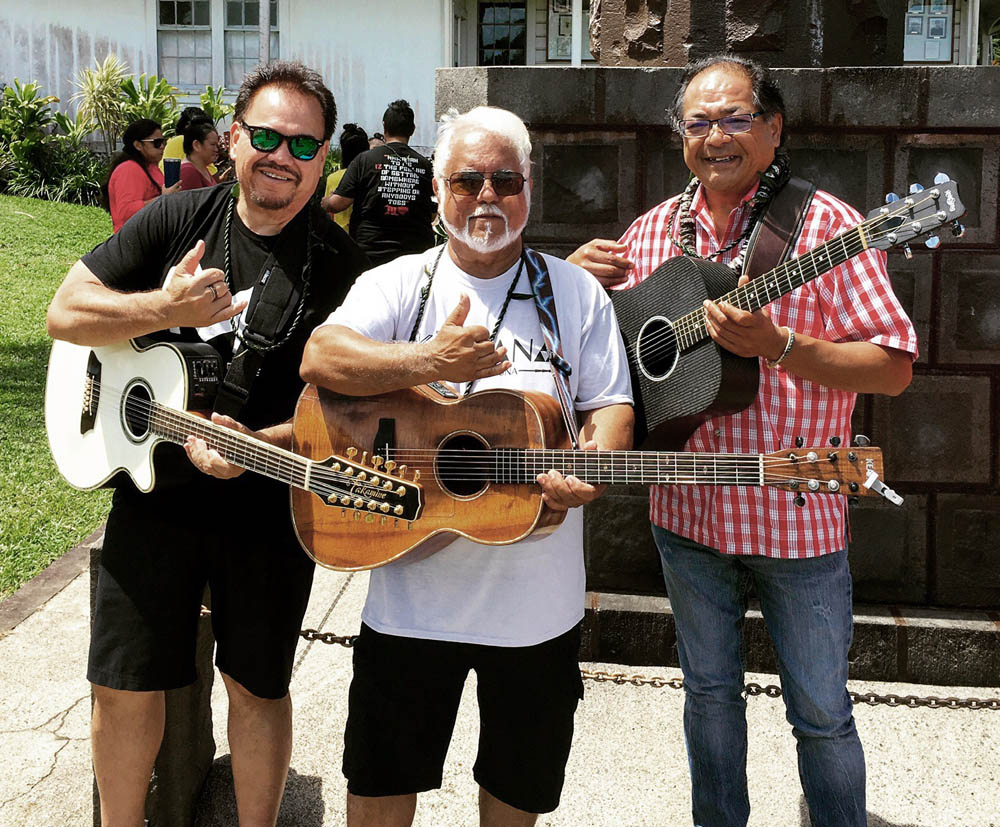
“In 2015, I was living with a friend, who was studying to be a priest. And he was asked to come to Kohala to be music director,” Mila says. “The congregation was finding that the traditional music of the Episcopal church wasn’t as relevant in this place and time. They wanted more Hawaiian style music, and more Hawaiian language, incorporated into the service…It so happened that my friend was just starting a new company on O‘ahu, and he asked me if I wanted the job instead.”
Even though he’s not himself an Episcopalian, Mila clearly believes in the aloha and spiritual power of music, which he generously shares pretty much wherever he goes. At St. Augustine’s, he’s found not only a terrific opportunity to do the work he loved, but a home, a house on the property large enough for his five children to visit. “It’s awesome to have a nice house where my kids can come on vacations,” he says.
The classic church, with its beautiful stained-glass windows, is a longtime landmark in North Kohala’s ethnically diverse community. It’s one of Hawai‘i’s earliest Episcopal churches, founded by English immigrant families in 1844, 12 years before King Kamehameha IV and Queen Emma officially invited the Church of England to send missionaries.
Mila affectionately calls it a “Sears and Roebuck church,” because many of its elements were built elsewhere and imported to the site by sailing ship. The altar was constructed in England and sailed around Cape Horn. On it is written, “This altar table is made from an oak grown on Loxley Estate, Staffordshire.” On the other side, “Presented to the church at Puehuehu [the Hawaiian name for this location] by the family of Sneyd Kynnersley, 1883.”
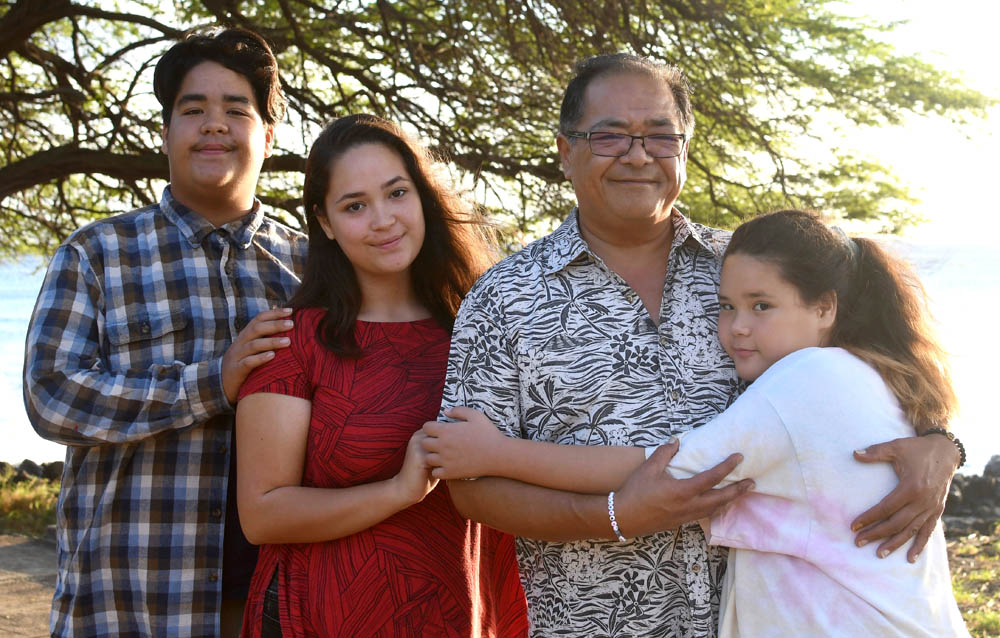
“The kids love it,” Mila says. And, because they live in Honolulu, he lets them take time to slow down and make the transition to a more country lifestyle when they arrive. “I give them a couple days to sleep, let the stress off, and let all the good things from Kohala come in,” Mila says.
“It’s so obvious; their whole demeanor, everything about them, changes. And their mom says the same thing about when they go back,” he continues. “Both have aloha spirit and they are able to experience both places. We do our best to make sure they know that they have a connection that stays viable and relevant in both of our homes.”
In addition to playing for worship services at St. Augustine’s, Mila teaches keiki ‘ukulele classes, and helps students perform for special Youth Sundays. He also entertains at church functions, like the Annual Bazaar and Christmas festivities. In the community, he teaches ‘ukulele at Waimea Country School, and hosts a weekly comedy show on local radio channel KNKR FM 96.1.
“It’s called ‘Mila’s Lunch Wagon,’ where I do multiple characters all based on people I know here in Kohala,” he says. “I also play and sing and play recorded Hawaiian music on there as well. If you want, you can catch some of the archived shows at KNKR.org. All of this is my attempt to perpetuate the musical culture of Kohala and Hawai‘i Island.”
On Saturdays he plays and sings at the Hawi Farmersʻ Market, under the Banyan trees. It’s a gig that’s very close to his heart. He remembers going there for the first time.
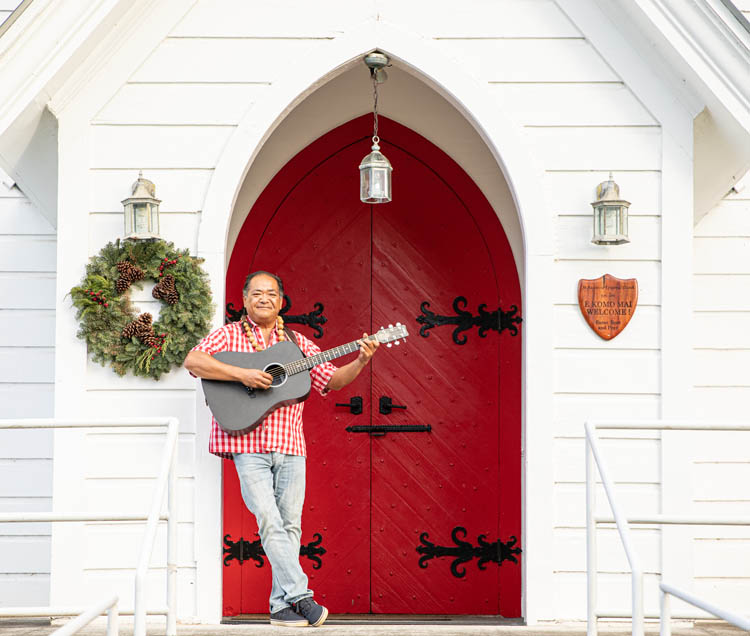
“I was thinking, ‘OK, I need to play music. What am I going to play?’” Mila says. He tried some songs by American folk-rock artists—James Taylor; Crosby, Stills, Nash, and Young—and then started playing some Hawaiian music that his uncle taught him.
“After three songs, a woman came up to me with tears in her eyes,” Mila says. “She asked me, ‘Do you know how long it’s been since we heard Hawaiian music here? It seems like the Hawaiian music goes someplace else, where it can make money.’”
He continues, “I knew that first Saturday here that the music my mother, my uncle, my grandmother taught me was what I needed to play…When I was young, my grandmother would sit me down on a lauhala mat and say ‘Sing this song, memorize these words.’ The same with Bible verses: read, memorize.”
“I told myself, ‘I’m going to play Hawaiian music,’” says Mila, adding, “It’s easy to go to a hotel and make $300 an hour instead of playing here for $40. But I made a pact with my ‘aumakua [to keep my music here].”
He remembers one time his daughter was with him when he was playing at the farmersʻ market. “I started playing ‘Hi‘ilawe,’ and I heard someone singing along. When I turned around and realized that it was my daughter, I asked her ‘How do you know that song?’ and she told me, ‘Cause you always sing it, Dad.’ It’s the most wonderful thing.”
Reminiscing, he recalls other times, other places around the world where he would play. But the music always brought him home.
“Pono is always flowing through you no matter where we go,” Mila says. “When I sing Hawaiian music, all those memories come back. When the wind blows just right, when the birds sing just right, something happens in my fingers, and I know that’s my grandmother or great-grandmother or great-great-grandchildren. How blessed am I to be in that spot in that moment? And top of that, it’s good fun.”
Mila plays for Sunday worship services at St. Augustine’s at 7am and 9am weekly, at 54-3801 Akoni Pule Highway in Kapa‘au, and Hawi Farmersʻ Market on Saturdays from 9am–12:30pm, at the intersection of Akoni Pule Highway and Hawi Road. ❖
For more information:
MilaPolevia@gmail.com, staugustineskohala.com
